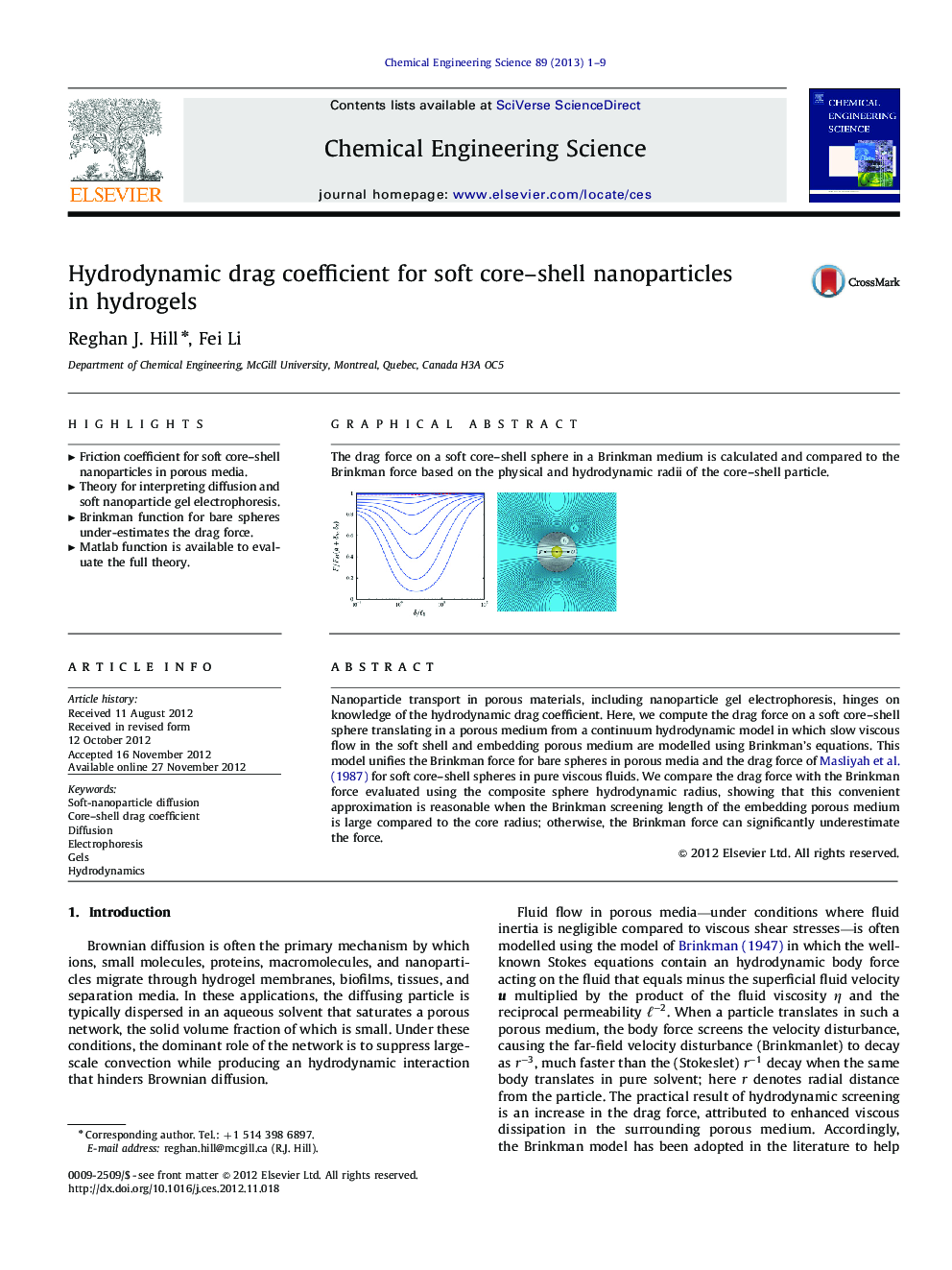| Article ID | Journal | Published Year | Pages | File Type |
|---|---|---|---|---|
| 155472 | Chemical Engineering Science | 2013 | 9 Pages |
Nanoparticle transport in porous materials, including nanoparticle gel electrophoresis, hinges on knowledge of the hydrodynamic drag coefficient. Here, we compute the drag force on a soft core–shell sphere translating in a porous medium from a continuum hydrodynamic model in which slow viscous flow in the soft shell and embedding porous medium are modelled using Brinkman's equations. This model unifies the Brinkman force for bare spheres in porous media and the drag force of Masliyah et al. (1987) for soft core–shell spheres in pure viscous fluids. We compare the drag force with the Brinkman force evaluated using the composite sphere hydrodynamic radius, showing that this convenient approximation is reasonable when the Brinkman screening length of the embedding porous medium is large compared to the core radius; otherwise, the Brinkman force can significantly underestimate the force.
Graphical abstractThe drag force on a soft core–shell sphere in a Brinkman medium is calculated and compared to the Brinkman force based on the physical and hydrodynamic radii of the core–shell particle.Figure optionsDownload full-size imageDownload high-quality image (585 K)Download as PowerPoint slideHighlights► Friction coefficient for soft core–shell nanoparticles in porous media. ► Theory for interpreting diffusion and soft nanoparticle gel electrophoresis. ► Brinkman function for bare spheres under-estimates the drag force. ► Matlab function is available to evaluate the full theory.
